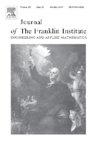基于动态反演和神经网络的多干扰不确定条件下航母自动降落五级控制
IF 4.2
3区 计算机科学
Q2 AUTOMATION & CONTROL SYSTEMS
Journal of The Franklin Institute-engineering and Applied Mathematics
Pub Date : 2025-06-01
DOI:10.1016/j.jfranklin.2025.107719
引用次数: 0
摘要
提出了一种新的舰载机自动着陆控制方案,提高了舰载机的着陆精度,提高了参考轨迹的跟踪精度和着陆精度。首先,将舰载机的非线性动力学写成五级级严格反馈形式。然后,采用一种新颖的非线性动态反演(NDI)控制方法,扰动观测器(用于估计空气尾流和风型扰动),径向基函数神经网络(RBFNNs)用于估计参数不确定性,基于递推最小二乘算法的块(用于甲板运动预测),甲板运动补偿子系统,用于更新飞机参考轨迹的块和一阶命令滤波器(用于计算所需的参考信号)。基于NDI和RBFNN的舰载机自动着陆系统由制导分系统、姿态控制分系统、角速率控制分系统和进近功率补偿系统组成。将扰动观测器、控制器、rbfnn和命令滤波器的稳定性特性集成到基于李雅普诺夫的分析中,以证明闭环控制体系结构的稳定性。最后,通过对比数值仿真验证了所提出的舰载机自动着陆系统的有效性。本文章由计算机程序翻译,如有差异,请以英文原文为准。
Dynamic inversion- and neural network- based five-stage cascaded control for automatic carrier landing subject to multiple disturbances and uncertainties
This work proposes a novel control scheme for automatic carrier landing to enhance the landing precision and improve both the tracking of the reference trajectory and the touchdown accuracy. First, the nonlinear dynamics of the carrier-based aircraft is written under a five-stage cascaded strict feedback form. Then, a robust automatic carrier landing system (ACLS) is proposed by employing a novel nonlinear dynamic inversion (NDI)-based control approach, disturbance observers (for estimating the airwake and wind type disturbances), radial basis function neural networks (RBFNNs) for the estimation of the parametric uncertainties, a block based on a recursive least squares algorithm (for the deck motion prediction), a deck motion compensation subsystem, a block for updating the aircraft reference trajectory, and first-order command filters (for computing the required reference signals). The NDI- and RBFNN- based automatic carrier landing system consists of a guidance subsystem, attitude control subsystems, an angular rates’ control subsystem, and an approach power compensation system. The stability properties of the disturbance observers, controllers, RBFNNs, and command filters are integrated into a Lyapunov-based analysis to prove the stability of the closed-loop control architecture. Finally, the effectiveness of the presented automatic carrier landing system is verified by means of comparative numerical simulations.
求助全文
通过发布文献求助,成功后即可免费获取论文全文。
去求助
来源期刊
CiteScore
7.30
自引率
14.60%
发文量
586
审稿时长
6.9 months
期刊介绍:
The Journal of The Franklin Institute has an established reputation for publishing high-quality papers in the field of engineering and applied mathematics. Its current focus is on control systems, complex networks and dynamic systems, signal processing and communications and their applications. All submitted papers are peer-reviewed. The Journal will publish original research papers and research review papers of substance. Papers and special focus issues are judged upon possible lasting value, which has been and continues to be the strength of the Journal of The Franklin Institute.

 求助内容:
求助内容: 应助结果提醒方式:
应助结果提醒方式:


